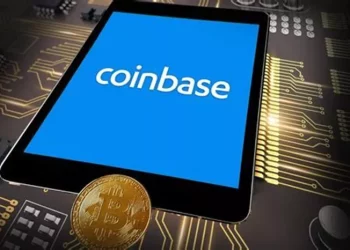The rapid growth of cryptocurrencies has given rise to a variety of new tools and platforms designed to help users manage their digital assets. Among these tools is Coinbase Wallet, a non-custodial wallet provided by Coinbase that allows users to store and manage their cryptocurrencies and interact with decentralized applications (dApps). But with the increasing number of cyberattacks and security breaches in the digital asset space, the question on many users’ minds is, “Is my Coinbase Wallet secure?”
This article delves deep into the security features of Coinbase Wallet, offering an analysis of how secure it is, what risks it might expose you to, and the steps you can take to further enhance the safety of your digital assets. Whether you’re a seasoned cryptocurrency user or a newcomer to the space, it’s crucial to understand how to protect your investments.
What is Coinbase Wallet?
Before diving into security considerations, it’s important to clarify what Coinbase Wallet is and how it differs from other types of wallets. Coinbase Wallet is a non-custodial wallet, meaning that you control the private keys to your cryptocurrencies, not a third party. Unlike custodial wallets (such as the wallet on the main Coinbase platform), where a platform like Coinbase holds your private keys and assets, with Coinbase Wallet, you are your own bank.
Coinbase Wallet provides users with the ability to store a variety of cryptocurrencies and tokens. The wallet supports major cryptocurrencies like Bitcoin (BTC), Ethereum (ETH), Litecoin (LTC), and a wide range of ERC-20 tokens. It also allows users to interact with decentralized applications (dApps) directly from the app, facilitating decentralized finance (DeFi) activities, trading, and even gaming.
Given that Coinbase Wallet is non-custodial, it’s crucial to ensure the wallet’s security, as any loss of control over your private keys could result in the loss of your assets.
Key Security Features of Coinbase Wallet
Coinbase Wallet is designed with multiple layers of security to protect users’ assets. Below are the primary features that contribute to the overall security of the platform:
1. Non-Custodial Nature of the Wallet
As a non-custodial wallet, Coinbase Wallet gives you full control over your assets. This means that you are the sole owner of your private keys, and no one— not even Coinbase— can access your funds without your consent. With full control comes great responsibility, as losing your private keys or recovery phrase means losing access to your wallet permanently. However, this also means that you are not relying on a third party to safeguard your funds, and there is no risk of a centralized hack targeting your wallet’s assets (as can happen with custodial exchanges).
2. Private Key Control
The most significant aspect of a non-custodial wallet is the ability to manage your private keys. In Coinbase Wallet, the private keys are stored locally on your device, not on Coinbase’s servers. The security of your wallet, therefore, depends on the protection of these keys.
If someone gains access to your private keys, they can access your wallet and the funds stored within it. On the other hand, if your private keys are kept safe and secure, only you have access to your digital assets. Coinbase Wallet uses secure encryption protocols to protect these private keys on your device, minimizing the risk of theft.
3. Seed Phrase Backup
When setting up Coinbase Wallet, you are given a 12-word recovery phrase (also known as a seed phrase). This seed phrase is crucial for recovering your wallet if you lose access to your device or forget your password. The recovery phrase essentially acts as a backup, allowing you to restore your wallet and assets on a new device.
Coinbase Wallet’s security system encourages you to write down this recovery phrase and store it in a secure place. It’s important to understand that Coinbase will never ask you for this recovery phrase— if anyone contacts you claiming to be Coinbase support and asks for your recovery phrase, it is a scam. Keeping your recovery phrase private and safe is one of the most effective ways to ensure the security of your wallet.
4. Two-Factor Authentication (2FA)
While Coinbase Wallet is a non-custodial wallet, it still offers two-factor authentication (2FA) as an additional layer of security. When you set up Coinbase Wallet, you can enable 2FA, which requires you to verify your identity through an additional method, such as a text message or authentication app, before accessing your account or making transactions.
Enabling 2FA adds an extra layer of protection to your wallet, making it significantly harder for attackers to access your funds, even if they manage to acquire your password.
5. Biometric Authentication
Many users opt to use biometric authentication, such as fingerprint recognition or facial recognition, when accessing Coinbase Wallet on their mobile devices. This feature makes it more difficult for someone to unlock your wallet if they don’t have access to your biometric data. By enabling biometric authentication, you’re adding another layer of protection to your wallet and making unauthorized access less likely.
6. Encryption
Coinbase Wallet uses strong encryption protocols to protect sensitive data, such as your private keys and transaction history. The encryption ensures that even if someone gains physical access to your device, they will not be able to read the information without your password or biometric data.
The local storage of your private keys, along with encryption, ensures that your wallet is as secure as possible from external threats. This means that as long as you follow best practices for securing your device (such as using a strong password and enabling biometric authentication), your assets should be safe from unauthorized access.
7. Regular Updates and Bug Fixes
Coinbase Wallet’s development team regularly releases updates and patches to ensure that any potential vulnerabilities are addressed. Keeping your app updated ensures that you benefit from the latest security improvements and protections against new threats. Be sure to enable automatic updates on your mobile device to ensure that your wallet remains secure at all times.
What Are the Risks to Coinbase Wallet Security?
While Coinbase Wallet offers strong security features, no platform is entirely risk-free. As a user, it is important to understand the potential risks and take measures to mitigate them. Below are some of the primary risks associated with using Coinbase Wallet:
1. Loss of Private Keys
One of the greatest risks to your Coinbase Wallet is losing control of your private keys. Since Coinbase Wallet is non-custodial, you are responsible for securing your private keys and recovery phrase. If you lose your private keys or recovery phrase, you will lose access to your wallet and any assets stored within it. There is no way to recover your funds without these pieces of information.
To mitigate this risk, ensure that you store your private keys and recovery phrase in a secure, offline location. Never store them digitally (e.g., in your phone’s notes or on your computer) to avoid them being hacked.
2. Phishing Attacks
Phishing is a common cyberattack that involves tricking users into revealing their sensitive information, such as private keys, passwords, or recovery phrases. Phishing can occur through fraudulent emails, websites, or apps designed to look like legitimate Coinbase services.
To protect yourself from phishing attacks, always verify the legitimacy of any communication you receive. Coinbase will never ask you for your recovery phrase or private keys. Be sure to only use the official Coinbase Wallet app and website, and avoid clicking on links from unknown or untrusted sources.
3. Device Security
Since Coinbase Wallet stores your private keys locally on your device, the security of the device itself is crucial. If your phone or computer is compromised (for example, through malware or theft), your wallet could be at risk.
To mitigate this risk, use strong passwords to protect your devices, enable encryption, and avoid downloading suspicious apps or files. It’s also essential to install a reputable antivirus program and avoid using public Wi-Fi networks when accessing your wallet.
4. Loss of Access to the Wallet
If you forget your password or lose your device, there’s no way to recover your wallet without the recovery phrase. While this is an issue inherent to all non-custodial wallets, it’s critical to remember that the responsibility to maintain access to your wallet falls on you.
To ensure you can always recover access, store your recovery phrase in multiple secure locations, such as a safe deposit box, and never share it with anyone.
5. Human Error
The security of your wallet ultimately depends on how you manage it. Simple mistakes, such as accidentally sending your private keys to the wrong person or falling for a phishing attack, can lead to irreversible losses.
To mitigate human error, always double-check transaction details, verify the legitimacy of requests for sensitive information, and educate yourself on the latest security threats.
How to Improve the Security of Your Coinbase Wallet
There are several additional steps you can take to further improve the security of your Coinbase Wallet:
Use Hardware Wallets: For users storing large amounts of cryptocurrency, it’s a good idea to use a hardware wallet (cold storage). Hardware wallets store your private keys offline, making them immune to online hacking attempts.
Enable 2FA and Biometric Authentication: As mentioned earlier, enabling two-factor authentication (2FA) and biometric authentication adds an extra layer of protection to your wallet.
Regularly Update Your Wallet: Ensure that you always use the latest version of the Coinbase Wallet app by enabling automatic updates on your mobile device.
Be Wary of Phishing Scams: Always verify the legitimacy of any communication or website before sharing personal information. Be cautious of unsolicited messages or links.
Store Your Recovery Phrase Securely: Store your recovery phrase in multiple secure locations, such as a safe deposit box, and avoid keeping it in digital formats.
Conclusion
Coinbase Wallet is generally a secure platform for managing your digital assets, offering strong features such as private key control, encryption, and two-factor authentication. However, because Coinbase Wallet is a non-custodial wallet, it places the responsibility for security squarely on the shoulders of the user. Loss of private keys, phishing attacks, and device security issues are potential risks to consider.
By understanding the security features of Coinbase Wallet and taking necessary precautions, such as enabling 2FA, securely storing your recovery phrase, and using hardware wallets for large amounts of cryptocurrency, you can enhance the security of your assets and reduce the likelihood of losing your funds. As with all digital security, vigilance and education are key to keeping your investments safe.
Related topics:

















